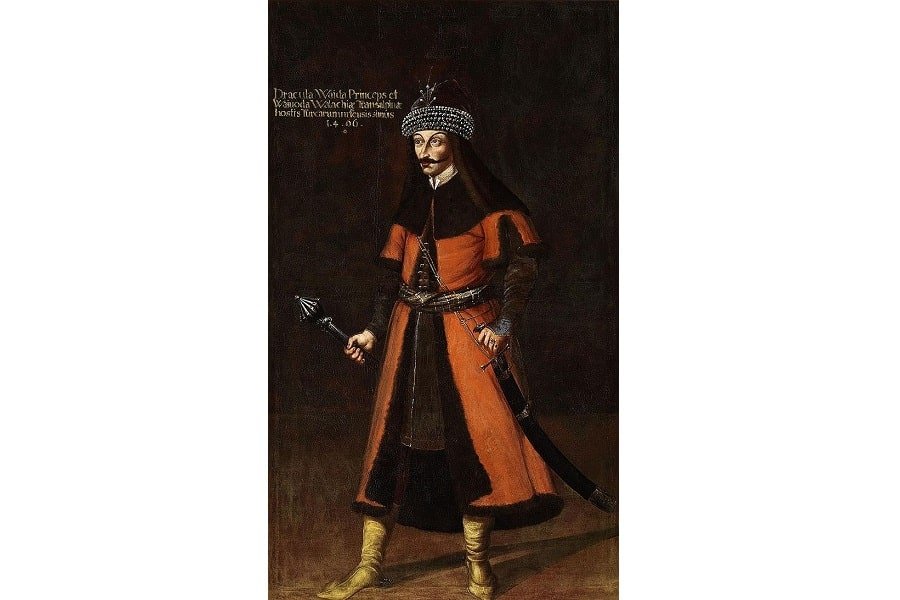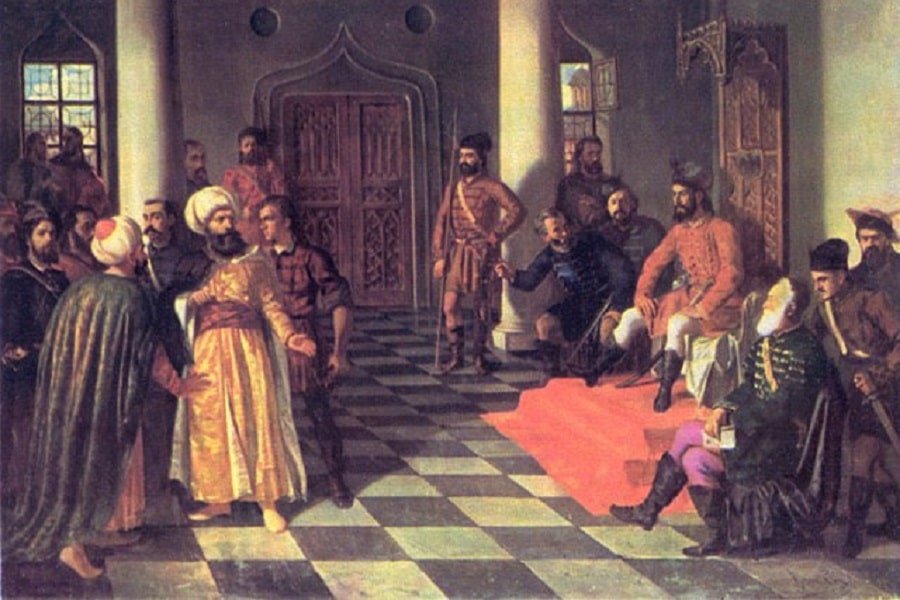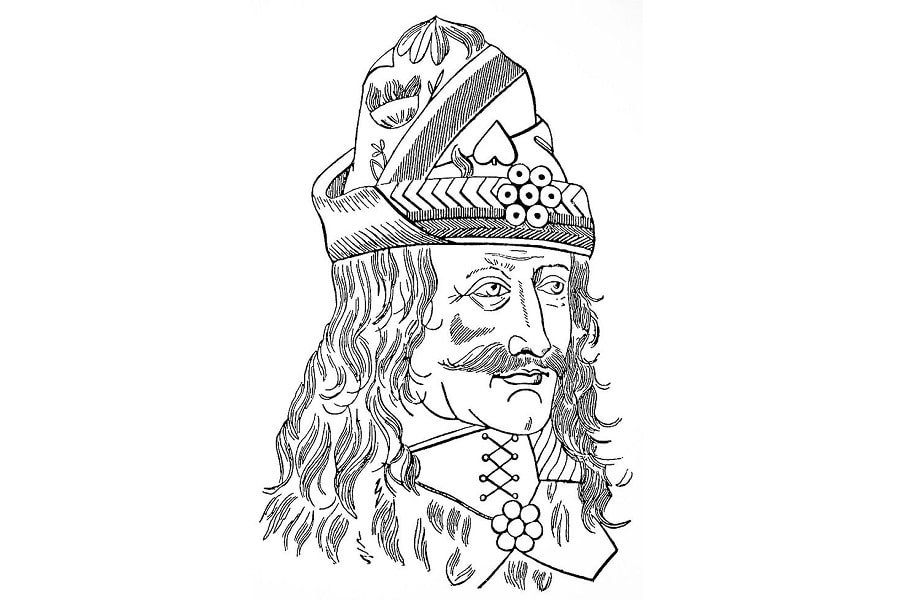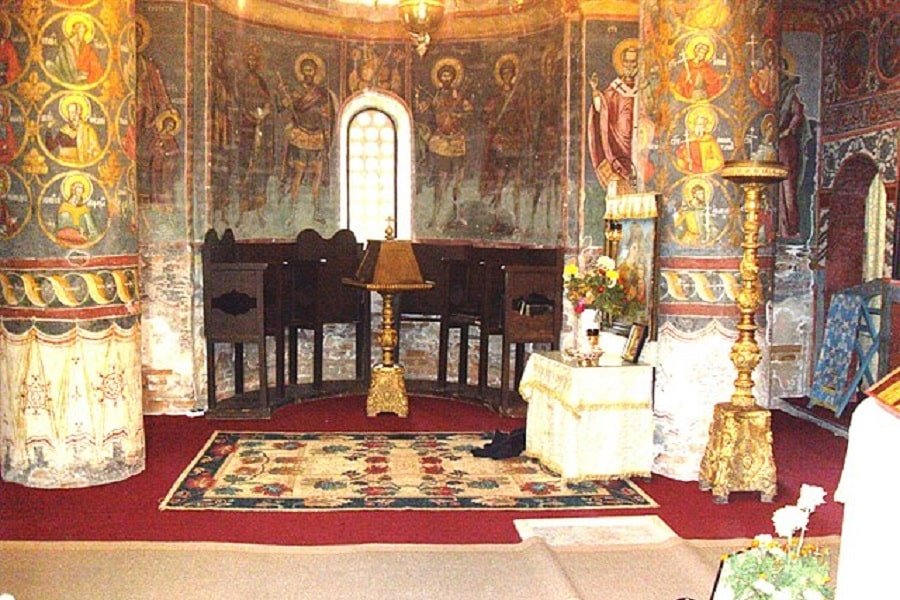Killed in battle against the powerful Ottoman Empire, the exact circumstances of Vlad the Impaler’s death remain a mystery. Perhaps he died during the fighting itself. Perhaps he was finished off by assassins who had been assigned that specific task. Most people now know that man only as the inspiration behind Bram Stoker’s Count Dracula. He gained a fearsome reputation during his own lifetime, but still, the exact circumstances of his death remain uncertain, as there are different accounts and legends surrounding the event.
Table of Contents
How Did Vlad the Impaler Die?

Vlad the Impaler died either in late December 1476 or early January 1477. He was fighting a battle against the Turkish Ottoman Empire and Basarab Laiotă, who had laid claim to Wallachia. Vlad the Impaler, also known as Vlad III, ruled Wallachia, today’s Romania, in the 15th century.
Vlad had the support of Stephen the Great, the voivode (or governor) of Moldavia. The King of Hungary, Matthias Corvinus, also recognized Vlad III as the lawful prince of Wallachia. But he did not provide Vlad with military support. Stephen the Great and Vlad III together managed to initially oust Basarab Laiotă from his position as voivode of Wallachia in 1475.
Basarab had been elected as voivode by the boyars. The boyars were the highest rank of nobility in the Eastern European states. They were second in position only to the princes. They had been very unhappy with Vlad’s brutality and reign. Thus, they supported Basarab when he sought out the aid of the Ottomans to reclaim his throne. Vlad III died fighting against this army and Stephen of Moldavia reported that the Moldavian troops he had given Vlad were also massacred in the battle.
What Happened to Vlad the Impaler?

How did Vlad the Impaler die? There are several theories about how exactly it could have happened. There were no eyewitnesses and no written accounts left behind of the event. Chroniclers and writers who wrote at the time could only speculate based on interviews with family and allies.
What we do know is that Vlad the Impaler died in the midst of a battle. After his death, the Ottomans reportedly cut his body into pieces. Vlad’s head was sent to the Ottoman sultan and placed on a high stake in Constantinople to serve as a warning. The details of his burial are not known although local legend says that the rest of his body was eventually discovered by monks in the marshlands and buried by them.
Ambush
The most popularly accepted theory is that Vlad the Impaler and his Moldavian army were ambushed by the Ottomans. Unprepared, they attempted to fight back but were all massacred. Basarab, whom Vlad had ousted, was not content to leave his seat and flee. He went to Sultan Mehmed II, who was no fan of Vlad the Impaler and asked for his help in regaining his throne. Basarab also had support among the boyars.
The battle occurred somewhere between the modern-day Romanian towns of Bucharest and Giurgiu. It was quite possibly near the commune of Snagov. Vlad had with him a force of 2000 Moldavian soldiers. But when he was cornered by the Turkish troops, which were 4000 in number, he only had 200 soldiers fighting by his side. Vlad is said to have fought for his life valiantly. However, he and his soldiers were slaughtered. Only ten soldiers managed to survive.
This is the version that most historians accept as true because it is the account that Stephen the Great himself gave. The ten soldiers who lived are said to have brought the story to him. Stephen wrote a letter in 1477 CE where he spoke of the massacre of Vlad’s retinue.
Assassin in Disguise

The second possibility is that Vlad the Impaler was assassinated. The plot might have been hatched by the boyars, who were unhappy with the way that Vlad was conducting affairs. It might also have been hatched by the Turkish Empire itself.
According to the first theory, Vlad had emerged triumphant and was assassinated after winning the battle. If he was murdered by a disloyal boyar faction, it probably happened after the battle. The boyars were tired of the incessant wars and had asked Vlad to cease battling the Turks and resume paying tribute. When he did not agree to this, they threw in their lot with Basarab and got rid of Vlad.
The second theory was that he was killed in the heat of battle by a Turkish assassin who was dressed as one of his own men. He may also have been killed in camp before or after the battle, by a Turk dressed as a servant who beheaded him. Austrian chronicler Jacob Unrest believed in this theory.
Stephen the Great also suggested that the Wallachian ruler may have been intentionally abandoned on the battlefield, for easier access. This would mean that he was surrounded by traitors even among his own soldiers. Why else did only 200 soldiers fight to the end with him?
Mistaken By His Own Troops

The third theory was that Vlad the Impaler was killed by his own troops when they mistook him for a Turk. A Russian statesman called Fyodor Kuritsyn interviewed Vlad’s family after his death. After speaking to them, he put forward the theory that the Wallachian was attacked and killed by his own men because they thought he was a Turkish soldier.
This theory was given credence when several historians and researchers, Florescu and Raymond T. McNally, found accounts that said Vlad often disguised himself as a Turkish soldier. This was part of his battle strategy and military ruses. However, this very fact also makes this theory shaky. Why would his troops be fooled if he was used to doing this? Would they not have known of the ruse? Would they not have a system of communication worked out?
Furthermore, this would have only happened if Vlad’s army was winning the battle and had managed to throw back the Turks. By all accounts, this did not seem to have happened.
However Vlad the Impaler died, it does not seem that any of the factions were very upset. It was a clear win for the Ottomans and the boyars managed to hold onto their privileged positions. What is undeniable is that he had made many enemies during his lifetime and he died during battle. Whether it was the result of a conspiracy by either party can only be conjectured.
Where is Vlad the Impaler Buried?

The site of Vlad the Impaler’s burial is not known. Records from the 19th century show that the general populace believed he was buried in the Monastery of Snagov. Excavations were carried out in 1933 by archaeologist Dinu V. Rossetti. No tomb was discovered beneath the unmarked tombstone that supposedly belonged to Vlad.
Rossetti stated that there was no tomb or coffin to be found. They had only discovered many human bones and the Neolithic jaw bones of some horses. Other historians believe that Vlad the Impaler was probably buried in the church of the Comana Monastery. He had established the monastery and it was near the battlefield where he was killed. No one has attempted to excavate a tomb there.
The most unlikely hypothesis is that he was buried in a church in Naples. This is because some theorized that Vlad survived the battle as a prisoner and was later ransomed by his daughter. His daughter was in Italy at the time and he might have died there. There is no evidence for this theory.
Dracula’s Life and the Events That Led to His Death

Vlad III was the second son of Vlad II Dracul and an unknown mother. Vlad II became the ruler of Wallachia in 1436 and was given the name ‘Dracul’ because he belonged to the Order of the Dragon. The Order was created to halt the Ottoman advance into Europe.
Vlad III was probably born between 1428 and 1431. Vlad began to call himself Vlad III Dracula or Vlad Dracula in the 1470s, after the epithet given to his father. This is a term that has now become synonymous with vampires. But historians at the time used Vlad Dracula as a nickname for the Wallachian voivode. In Romanian historiography, he is known as Vlad Tepes (or Vlad Țepeș), meaning ‘Vlad the Impaler.’
READ MORE: Buffalo Bill Meets Dracula: William F. Cody, Bram Stoker, and the Frontiers of Racial Decay
Vlad had three reigns, interspersed with the reigns of his cousin, brother, and Basarab. At one point, Vlad the Impaler and his younger brother Radu the Handsome were held as hostages by the Ottoman Empire to ensure their father’s cooperation. The Ottoman sultan of the time, Sultan Mehmed II remained Vlad’s lifelong enemy, even when the two were forced to ally against common foes.
Vlad also had a strained relationship with Hungary. Top leadership in Hungary was responsible for the murder of Vlad Dracul and his eldest son Mircea. They then installed a cousin of Vlad’s (and Basarab’s elder brother), named Vladimir II, as the new voivode. Vlad the Impaler was forced to seek the help of the Ottoman Empire to defeat Vladimir II. Frequent changing of sides and alliances was quite common in these struggles.
Vlad’s first reign was only a period of a month, from October to November 1448, before Vladimir II ousted him. His second and longest reign was from 1456 to 1462. Vlad the Impaler defeated Vladimir decisively with Hungarian help (who had fallen out with Vladimir in the meantime). Vladimir died in battle and Vlad the Impaler began a purge among the Wallachian boyars since he doubted their loyalty.
This was also when Sultan Mehmed II demanded that Vlad the Impaler pay homage to him personally. Vlad refused and impaled his messengers. He then invaded Ottoman territories and brutally slaughtered tens of thousands of Turks and Muslim Bulgarians. The Sultan enraged, began a campaign to remove Vlad from power and replace him with Vlad’s younger brother Radu. Many of the Wallachians also deserted to Radu’s side.
When Vlad went to the Hungarian King Matthias Corvinus to seek aid, the king had him imprisoned. He was held in captivity from 1463 to 1475. His release came at the request of Stephen III of Moldavia, who then helped him take back Wallachia. Meanwhile, Basarab had overthrown Radu and taken his place. Basarab fled Wallachia when Vlad returned with an army. This third and last reign of Vlad the Impaler lasted from 1475 to his death.